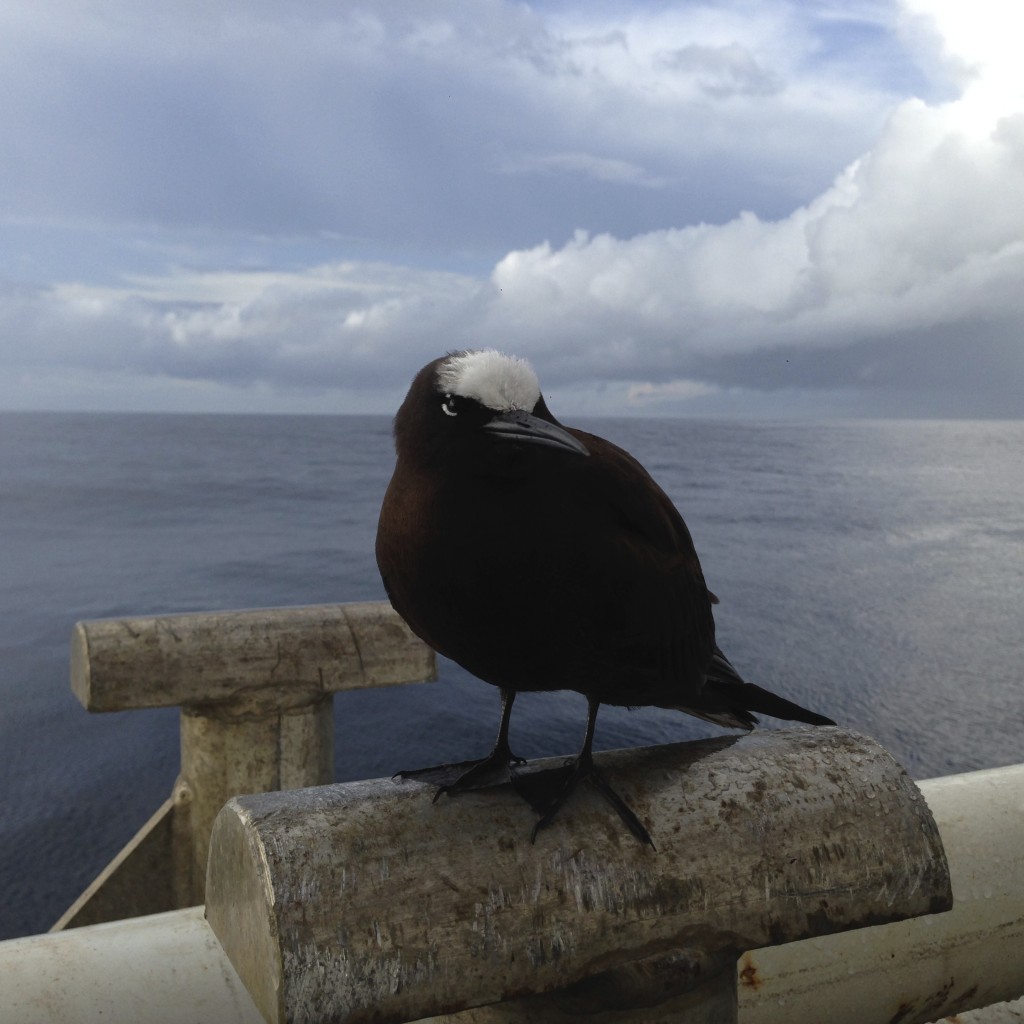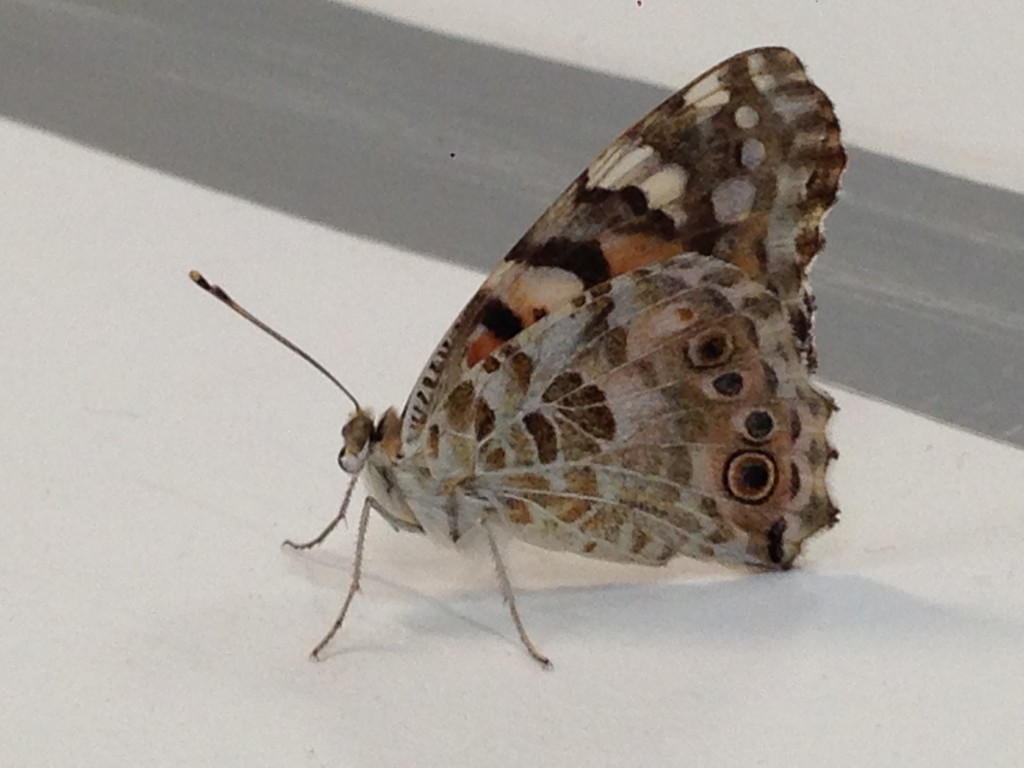We have visited two seamounts and successfully sampled for fossil and live corals, as well as a lot of seabed mud and water from different depths. It is great to have so many really valuable samples on board.
There is a little time, while we are relocating to our next sample site, to reflect on some of the amazing deep sea habitats that we have seen with the ISIS HD video (31st October). You may have already taken at look at the fantastic array of marine life that is both easy (shark- 21st October) and less easy to identify (pyrosome – 2nd November). We have collected so many samples and recorded so much video, the time between sample locations is very important: we can check our catalogued samples and place them into boxes so that they can be sent to the correct scientists once we are back on land.
When we do not have any sampling gear in the water doesn’t mean that we are not seeing any wildlife though. In addition the the life we have found at depth, we have also seen flying fish (18th October), squid and turtles. However not all species seen have been those living in the water. We have been a rest place for at least three types of birds and many butterflies and moths. The birds have rested in the shade, where they have been provided with food and water, then set off again on their way. Tonight the ocean is the roughest it has been so far (but still not very bad), so provides a perfect opportunity for securing myself in the lab with a nice hot drink and my computer so that I can start to analyse the diversity of life that we have found. I hope that you have all enjoyed the images from the deep as much as I have!
Blog Written and Photos taken by: Lucy Woodall





Leave a Reply